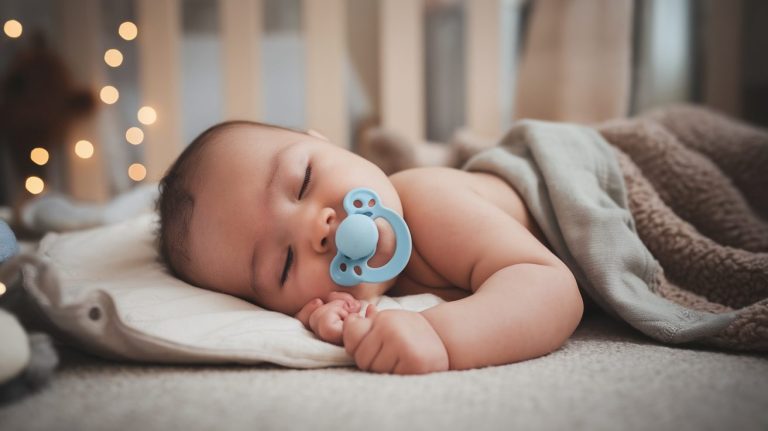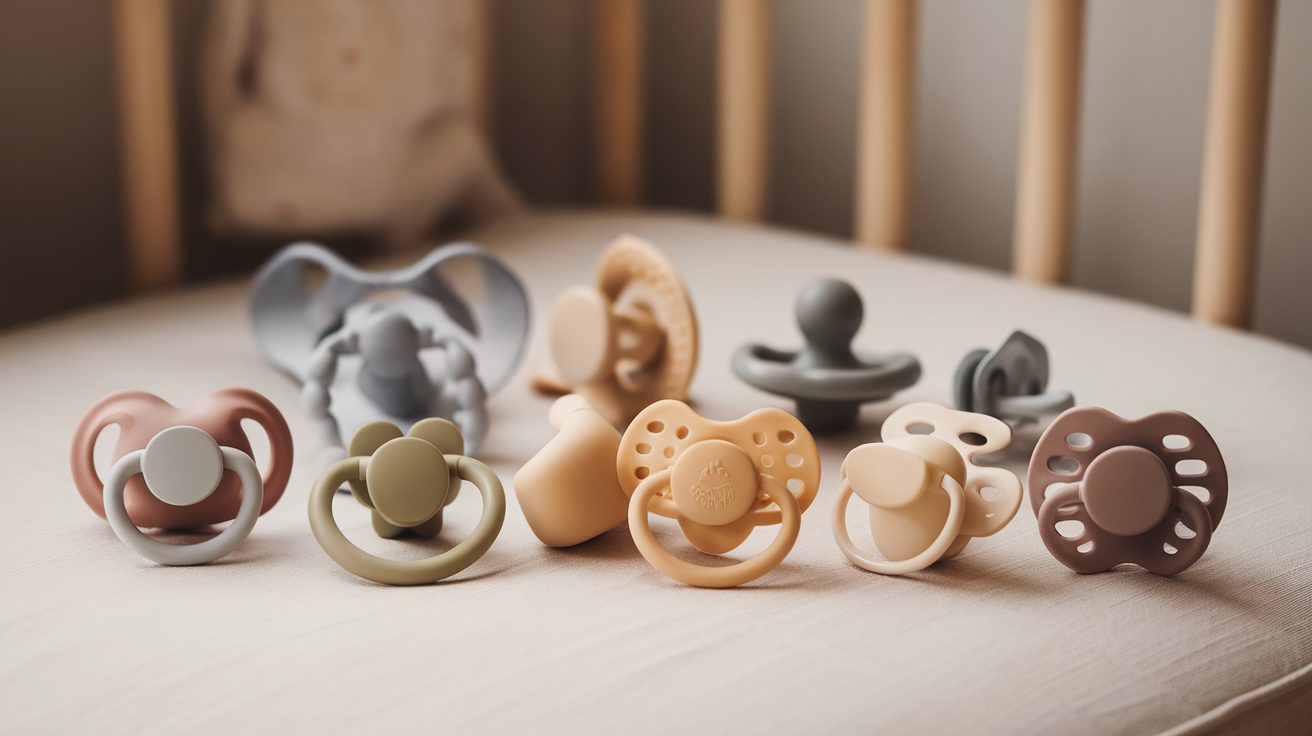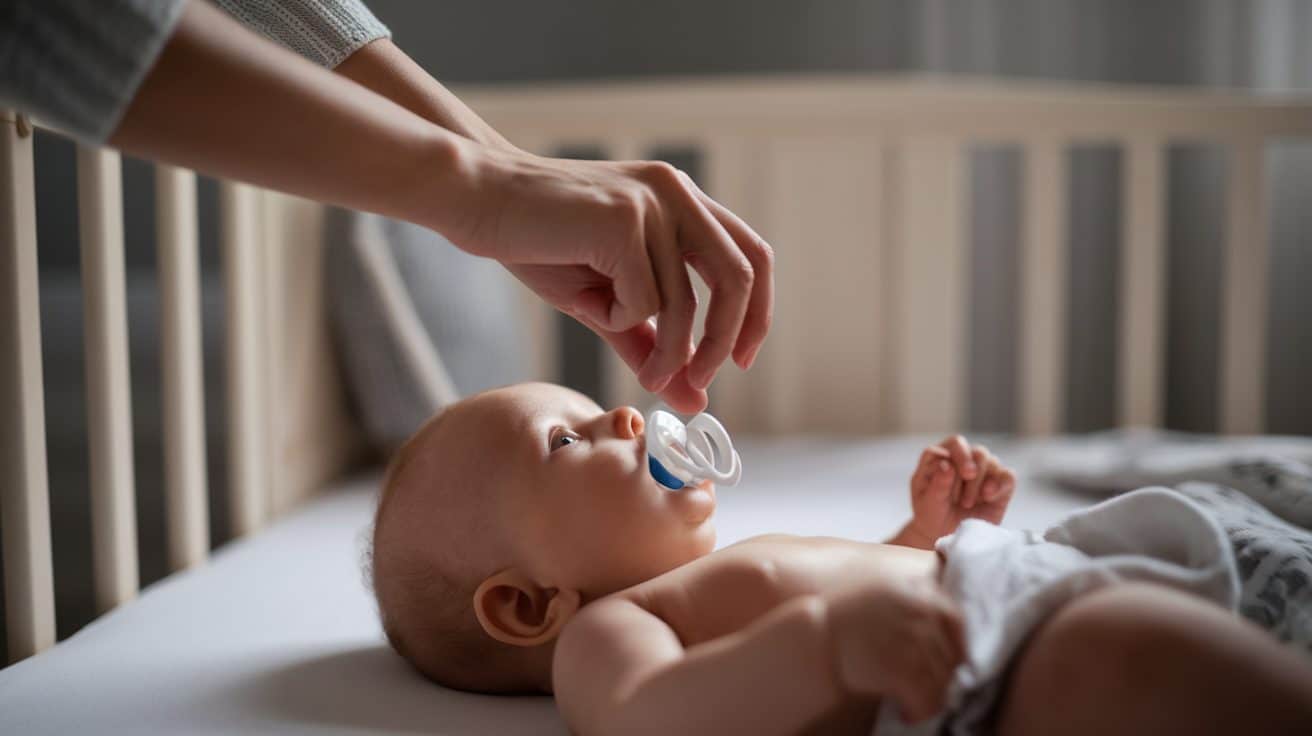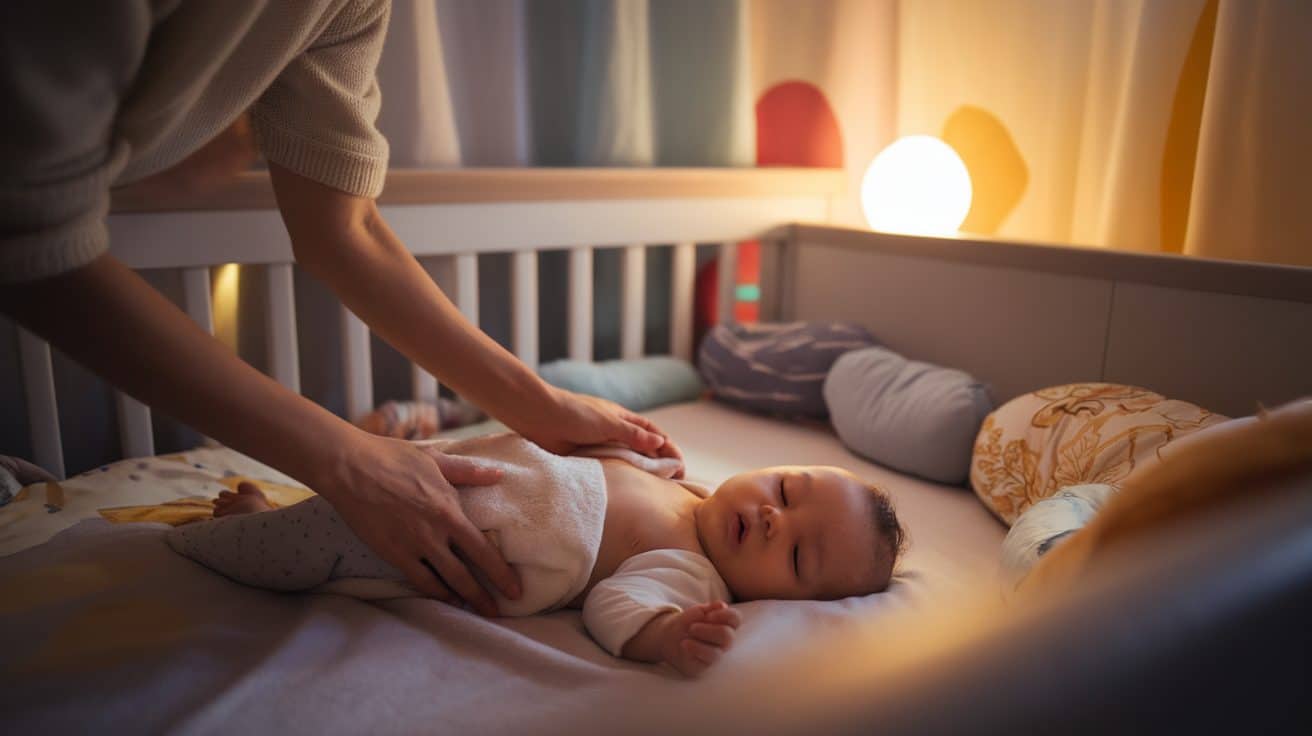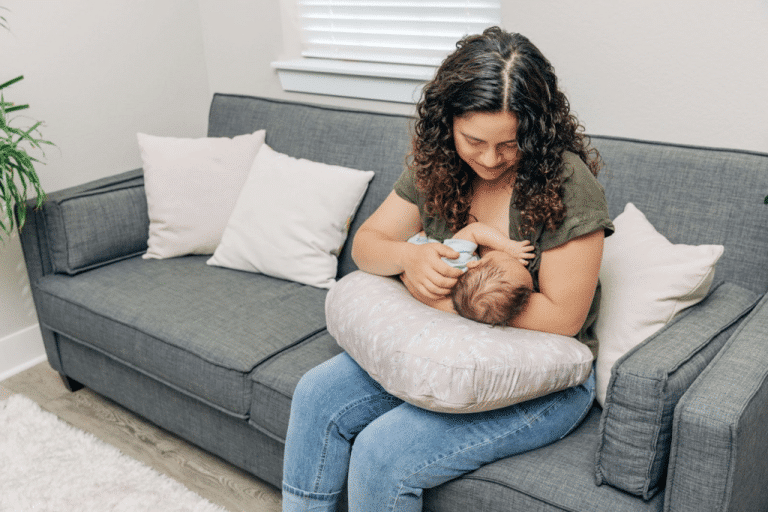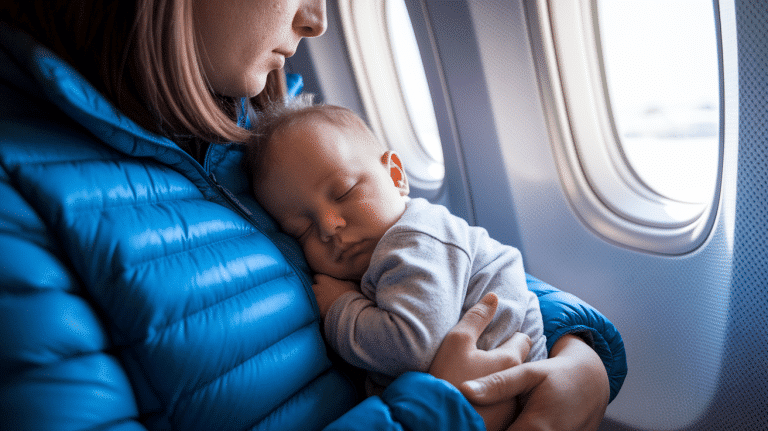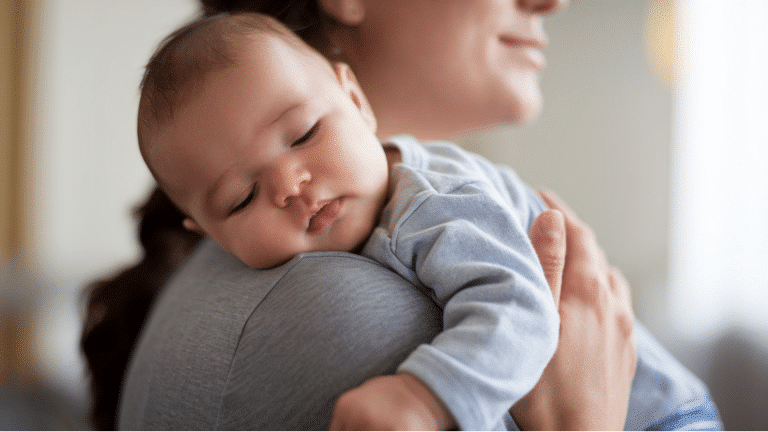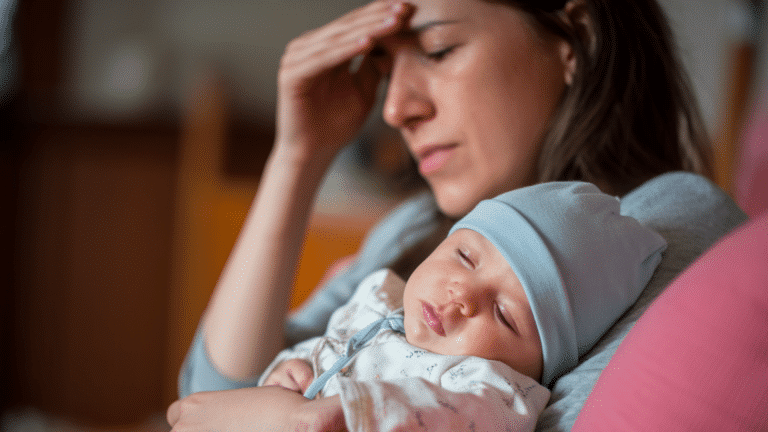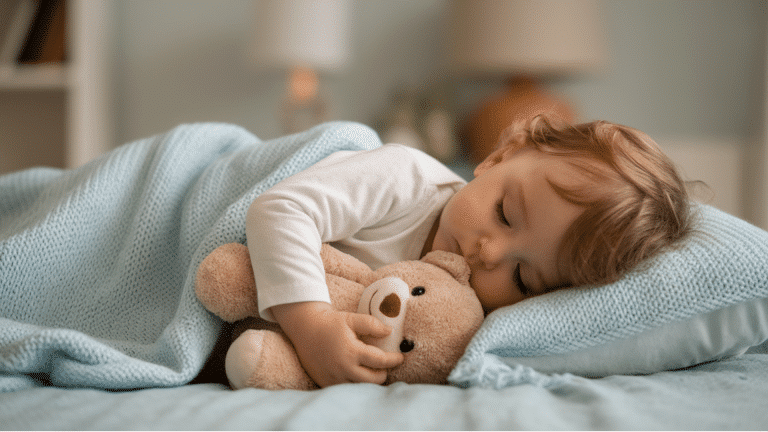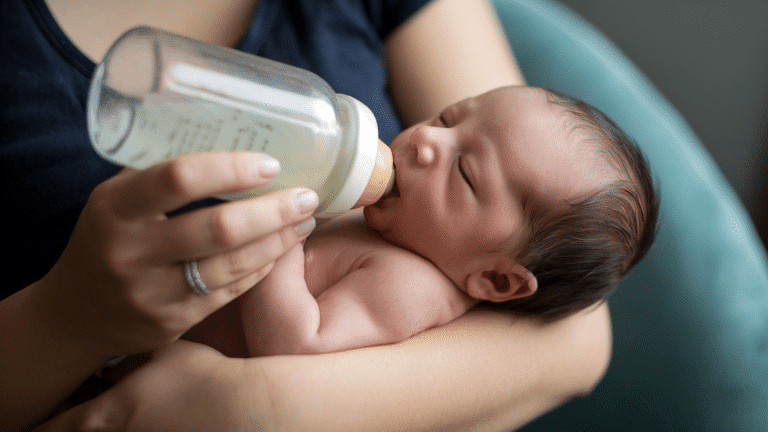Getting your baby to sleep soundly can be a challenge for many parents, but a sleep-training pacifier can be a helpful tool in creating a peaceful bedtime routine.
Designed to soothe and comfort, a sleep-training pacifier helps babies self-soothe, making it easier for them to fall and stay asleep longer.
By providing a sense of security, it can reduce fussiness and promote better sleep patterns.
In this blog, we’ll learn more about a sleep-training pacifier, from improving sleep quality for your little one to giving parents much-needed rest.
This guide will show how this simple tool can make a big difference for the whole family.
What Is a Sleep Training Pacifier?
A sleep-training pacifier is a tool designed to help babies learn to self-soothe and fall asleep on their own.
It is a specially designed pacifier that can provide comfort and calmness to a baby, making it easier for them to settle down during bedtime or naps.
Unlike regular pacifiers, sleep-training pacifiers are often shaped to fit a baby’s mouth comfortably and stay in place, reducing the need for parents to reinsert it frequently.
They can be part of a sleep-training routine, teaching babies to rely on the pacifier for comfort instead of needing rocking or feeding to fall asleep.
Here’s a Guide on Using a Sleep Training Pacifier
- Start by choosing a pacifier that’s the right size for your baby’s age.
- Introduce it during bedtime or nap time when your little one is calm but not fully asleep.
- Gently place the pacifier in their mouth, helping them learn to self-soothe. Some babies take to it quickly, while others might need more time.
- Be patient and consistent. If the pacifier falls out, you can softly replace it.
How to Choose the Right Sleep Training Pacifier?
When choosing a sleep-training pacifier, there are several factors to keep in mind.
First, consider the size of the pacifier. It should fit comfortably in your baby’s mouth without being too big or too small.
Next, think about the material. Silicone and natural rubber are common choices that are safe and durable. The design of the pacifier is also important.
Look for one-piece designs that are easy to clean and have ventilation holes to allow airflow. Orthodontic pacifiers are shaped to support your baby’s developing mouth and teeth.
By selecting a pacifier that prioritises comfort and safety, you can help your baby sleep better.
Benefits of Using a Sleep Training Pacifier
1. Safety First: How Pacifiers Can Help Reduce SIDS Risk
Using a pacifier during sleep can help lower the risk of Sudden Infant Death Syndrome (SIDS).
Studies show that babies who use pacifiers while sleeping on their stomachs are less likely to experience SIDS.
The pacifier keeps the airway open and encourages safe breathing patterns. Always place your baby on their back to sleep, and offer a pacifier once breastfeeding is established.
This simple habit can make a big difference in keeping your baby safe.
2. Keeping Babies Happy: Comfort and Soothing
Pacifiers provide comfort and help babies feel calm.
They work like thumb sucking, which is a natural way for babies to soothe themselves.
When babies feel fussy or tired, a pacifier can help them relax and feel secure. This can be especially helpful during bedtime or when they’re upset.
Pacifiers are a simple tool to keep your baby happy and content.
3. Improved Hygiene: Safe and Clean
Pacifiers are easy to clean and keep hygienic. Many are made from medical-grade silicone, which is safe for babies and can be sterilized.
Unlike toys or other objects babies might put in their mouths, pacifiers can be washed and sanitized regularly.
This helps reduce the risk of germs and keeps your baby healthy. Always check pacifiers for damage and replace them when needed to ensure safety.
4. Distraction in Public
Pacifiers can help babies stay calm in busy places like stores or during doctor visits.
When babies feel overwhelmed, a pacifier gives them something to focus on. This distraction can stop fussiness and crying.
It also helps babies feel safe in new or noisy environments. For parents, it makes outings easier and less stressful.
Pacifiers are especially useful during medical check-ups or shots, as they comfort babies quickly.
This simple tool can turn a tough moment into a calm one, making life smoother for both babies and parents.
5. Helps Infants Fall Asleep Faster
Pacifiers can help babies under six months fall asleep more easily.
The sucking motion is natural and soothing for babies. It helps them relax and feel secure, which makes it easier to drift off to sleep.
This is especially helpful during naps or bedtime. Pacifiers can also reduce fussiness when babies are tired but having trouble settling down.
For parents, this means less time spent trying to calm a crying baby and more peaceful nights.
6. Benefits for Preterm Babies
Pacifiers are helpful for preterm babies. They improve bottle feeding by strengthening sucking skills.
This helps preemies grow faster and gain weight. Stronger feeding skills can lead to shorter hospital stays.
Pacifiers also soothe preterm babies, reducing stress and promoting better sleep. Hospitals often use pacifiers to support preemies’ development.
They are safe and easy to clean, making them a good choice for tiny babies. Parents can feel confident using pacifiers to help their preterm babies thrive.
7. Useful on Flights
Pacifiers can make flying easier for babies. During takeoff and landing, changes in air pressure can hurt babies’ ears.
Sucking on a pacifier helps relieve this pressure. It keeps babies comfortable and reduces ear pain.
Pacifiers also calm babies during the flight, making the trip smoother for everyone.
Parents can pack a pacifier in their carry-on for quick access. It’s a simple way to keep babies happy and relaxed while travelling.
8. Easier to Break the Habit
Pacifiers are easier to stop using than thumb-sucking. Parents can control when and where a pacifier is used.
Over time, they can limit its use and eventually take it away. Thumb sucking is harder to stop because the thumb is always available.
Pacifiers can be phased out gradually, making the transition smoother for babies.
Parents can also use positive reinforcement to help babies give up the pacifier. This makes it a better choice for long-term habits.
9. Not a Choking Hazard
Pacifiers are designed to be safe for babies. They are too big to be swallowed, reducing the risk of choking.
Babies often put small objects in their mouths, which can be dangerous. A pacifier keeps their mouth occupied, preventing them from picking up unsafe items.
Pacifiers are made with durable materials and meet safety standards. Parents can feel secure knowing pacifiers are a safe option for their babies.
Always check for damage and replace pacifiers if they show signs of wear.
Common Mistakes to Avoid with Sleep Training Pacifiers
When using pacifiers for sleep training, some parents might make mistakes that can hinder progress.
One common pitfall is overusing the pacifier, which can lead to dependence. To avoid this, try to limit pacifier use to sleep times only.
Another mistake is giving the pacifier too early before the baby is truly drowsy, which can make it harder for them to fall asleep on their own. Instead, wait for signs of sleepiness before offering the pacifier.
Alternative Sleep Training Methods
If you prefer not to use pacifiers for sleep training, there are other methods you can try.
Gentle sleep training techniques, such as the “pick up, put down” method or the “fading” method, involve gradually reducing your presence and support as your baby learns to fall asleep independently.
Establishing a consistent bedtime routine can also be helpful. This might include a warm bath, reading a story, or singing a lullaby before putting your baby to bed.
These activities signal to your baby that it’s time to wind down and prepare for sleep.
Conclusion
Sleep-training pacifiers offer numerous benefits, such as soothing fussy babies, promoting better sleep patterns, and helping infants self-soothe.
They can also reduce nighttime wake-ups and provide comfort during transitions.
By incorporating a sleep-training pacifier into your routine, you can support your baby’s sleep development while creating a calmer environment for both of you.
Every baby is unique, so take the time to explore different options and find the right pacifier that suits your little one’s needs.
Frequently Asked Questions
Should I Give the Baby a Pacifier when Sleep Training?
Yes, you can give your baby a pacifier when sleep-training. It can help soothe them and encourage self-settling.
How Do I Get My Baby to Stop Crying for The Pacifier at Night?
Gradually reduce pacifier use by offering other comfort methods and only giving it when necessary. Eventually, your baby will learn to self-soothe without it.
Can I Give My 3-Day-Old a Pacifier?
Yes, you can give a 3-day-old baby a pacifier. Just make sure it’s the right size and shape for their age.
At What Age Does a Pacifier Affect Teeth?
Pacifier use typically starts affecting teeth around age 2-4 when permanent teeth begin coming in. Prolonged use can cause dental issues.

